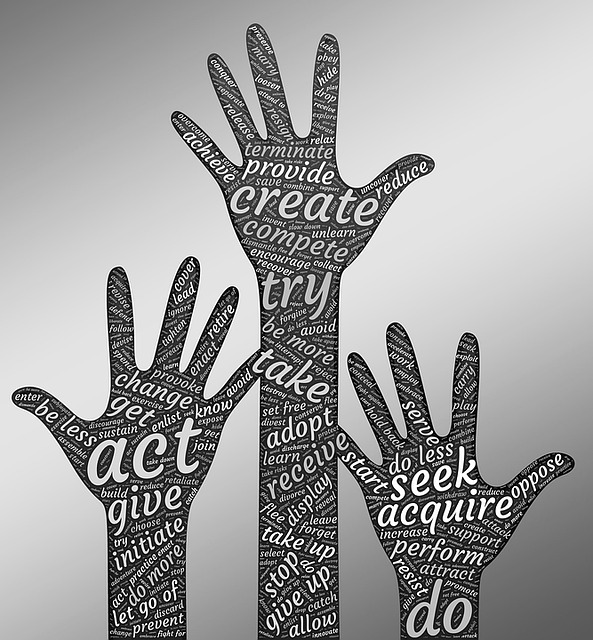Dr. Rod Waddington, PhD, recently published an article about his doctoral research which incorporated action learning as a central intervention. His article, Improving the work climate in a TVET [Technical & Vocational Education} college through changing conversations, tracks his intervention as Human Resource Development (HRD) Manager in a college in South Africa that had five campuses.
Organisational toxicity and its impacts
The college was characterised by a toxic workplace that resulted in both physical and psychological problems for employees, both managers and staff. Rod discussed the toxicity of the organisation in terms of the “toxic triangle” described in the article by Padilla, Hogan & Kaiser, The toxic triangle: Destructive leaders, susceptible followers, and conducive environments.
Rod was then able to address the three elements that contributed to toxicity in the college – toxic leaders, toxic followers and a toxic organisational context (systems, processes and procedures that enabled toxicity to develop and grow). Toxic leaders were identified as displaying narcissistic tendencies and traits in that they micromanaged, abused and bullied staff, failed to address poor behaviour (in part, because of favouritism), threw tantrums and undermined engagement, productivity and wellness of managers and staff.
The Action Learning Group
Rod was able to create an action learning group (action learning set) comprising a representative group of nine managers who managed campuses and reported to the Corporate Centre where the HRD manager worked. His description of this approach to organisational intervention was in terms of engaging people who were directly impacted by, and were contributeding to, the toxic organisational environment:
I had to learn to adopt an inclusive, participative, democratic paradigm to guide a bottom-up approach. I thus recruited other managers as participants, co-researchers and change agents to constitute an action learning set. (p.9)
The Action Learning Process
Rod chose to use a process of drawing and story telling to capture the experiences and feelings of the managers who formed the action learning group. He provided a large calico sheet for them to draw on and space around a central drawing of a river which symbolised the flow of events and the connectedness and interdependence of the group members.
In the first instance, the managers in the participating group were invited to identify events that contributed to their experience of trauma and stress. The invitation to draw and use colours and shapes engaged their right brain and moved them away from their usual mode of thinking – thus providing some sense of safety in exchanging information that was self-disclosing and uncomfortable, leaving them vulnerable.
The story telling or narrative that followed the drawings enabled the managers to articulate what they each had been feeling for a long time but that they had denied, submerged and kept hidden from others. The process gave them permission to be honest in their communication with each other because it helped them to realise that they were not alone in their experience of personal hurt and dissatisfaction.
The participating managers identified different feelings – a strong sense of abandonment through lack of support, devalued because they were not listened to, dehumanised because they were verbally abused and hopelessness because there was no positivity or direction provided.
In a second round of drawings, the managers were asked to develop a picture of a changed workplace which incorporated the values that had been denied through the toxicity of the work environment. This second drawing enabled the managers to tap into a sense of empowerment and hope that they could create an environment conductive to improved personal physical and mental health and to the development of an organisation characterised by wellness and mutual respect.
Outcomes of the Action Learning Process
Participants started to admit their own feelings as well as the part they themselves played in perpetuating the toxic environment. This growth in self-awareness enabled them to move from helplessness and self-blame to take up the “agency and responsibility” offered to them through the action learning process. In this way, they developed skills in self-management. Hence, the intervention overall enabled the development of managerial agency for the participant managers.
The focus of conversation amongst the managers moved from negative thoughts and stories to discussion focused on hope and aspiration. A key outcome was the development of a sense of responsibility, not only for their own area of responsibility but also for the organisation as a whole. This was reflected in the managers’ agreement to initiate a “values campaign” in their areas of responsibility based on five core values – inclusiveness, participation, trust, empowerment and consultation. They developed an agreed format for posters to be used as part of this “values advocacy”.
Through the processes of drawing, sharing and reflecting, participants built trust in each other, changed their mind-sets, developed better coping skills and increased resilience as proactive change managers.
The action learning process and the development of mindfulness
The action learning process enabled the participant managers to grow in mindfulness – becoming increasingly aware of themselves and the impact of their thoughts, feelings and behaviour on their organisational environment. Along with this increased self-awareness, they developed enhanced self-management skills, taking up responsibility for shaping their work environment and becoming more assertive in communicating and pursuing their own needs and those of their staff.
The participant managers were able to develop awareness through a clear focus on improving a toxic work environment and doing so in a non-judgmental way, moving from self-blame and blaming others to acting to improve the situation for all who were experiencing the pain and suffering resulting from organisational toxicity. So, they were motivated not only to remove their own pain and suffering but also that of others affected by the work environment. This then reflects compassion , a key feature of emotional intelligence and mindful leadership.
[Note: Dr. Rod Waddington published the abovementioned article with co-author, Leslie Wood, Research Professor, Faculty of Education Sciences, North-West University, South Africa.]
By Ron Passfield – Copyright (Creative Commons license, Attribution–Non Commercial–No Derivatives)
Image source: courtesy of acky24 on Pixabay
Disclosure: If you purchase a product through this site, I may earn a commission which will help to pay for the site, the associated Meetup group and the resources to support the blog.














